iPhone Not Showing Up in Finder? Here’s the Real Fix!
Here's what to do if your iPhone doesn't show up in Finder when you connect it to your computer.


If your first Apple devices are a newer iPhone and a newer Mac, you may not have ever used a cable to connect the two. There are significant benefits when you do, including backing up your iPhone to your Mac and accessing files or media. But what if you connect your iPhone to your Mac, and it doesn't show up in the Mac Finder as it should? Here's how to troubleshoot and fix the problem when your iPhone isn't showing up in Finder.
Related: 6 Easy Ways to Transfer Photos from iPhone to PC or Mac
Basic Troubleshooting Steps If Finder Not Recognizing iPhone
For more handy tips on syncing your Apple devices, consider signing up for our free Tip of the Day Newsletter. Now, here's a few things to check first when troubleshooting why your iPhone is not showing up in Finder.
Unlock Your iPhone
This step is pretty straightforward: make sure your device is unlocked. If your device is locked, this might be why your iPhone isn't showing up in Finder. If you're using an iPhone with a Home button, simply press the Home button and enter your passcode to unlock your phone. If you’ve set up Touch ID, you can also leave your finger on the Home button until your iPhone unlocks. On an iPhone X or later (iPhones with no Home button), tap the screen or press the side button. If Face ID is set up, look directly at your iPhone to unlock it, then swipe up from the bottom of the display. If Face ID isn’t set up, you can swipe up from the bottom of the screen and enter your iPhone passcode.
Unplug & Connect iPhone to Mac
If your iPhone is unlocked and still doesn't show up in the Mac Finder, try unplugging it and plugging it back in. Doing so will give your iPhone and Mac a chance to try the connection again. I also recommend testing a different USB port on your laptop to see if that works. If a different USB port works, you likely have a damaged USB port that will need to be fixed.
Update Your iOS & macOS Software
If your iPhone or Mac does not have the most recent software installed, a quick software update may help link the iPhone to your Mac. Much like you can automate your iPhone backups, you can easily enable automatic iPhone updates. If your iPhone is up to date, an out-of-date Mac may be the culprit preventing your iPhone from showing up in the Finder. Updating your Mac to the newest macOS is a little more involved, but once your Mac is up to date, your iPhone will hopefully appear in Finder.
Restart Your iPhone & Mac
If the steps above haven't worked, I recommend restarting your Mac and rebooting your iPhone or iPad to fix minor software issues. Once you've restarted your devices, unplug and reconnect your Apple device to see if it appears in Finder.
Check USB & Device Status If iPhone Doesn’t Appear in Finder
If your iPhone still isn't showing in Finder, it's time to check a simple system report to check the USB connection and make sure that iOS Device connection is enabled.
Check Your USB Port Status To Connect iPhone to Mac
Follow the steps below to check the connection between your iPhone and computer with a quick system report.
- With your iPhone plugged into your Mac, click the Apple Logo.
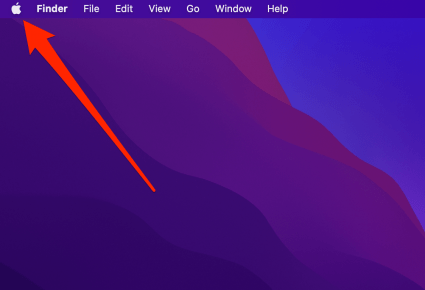
- Click About This Mac.

- Click System Report.

- Click USB from the menu on the left.
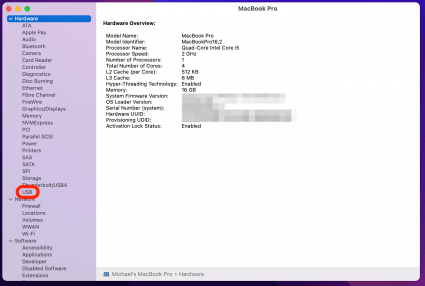
- Check to make sure your iPhone listed underneath the USB Device Tree.
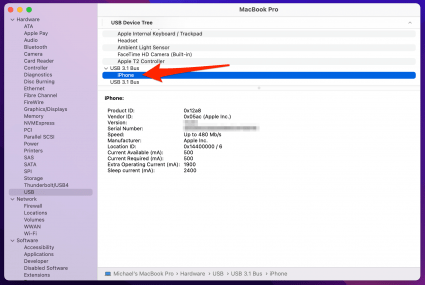
If your iPhone shows up under the USB menu, that means that your Mac hardware is registering the iPhone as connected, but the software is not. If you skipped the step above, I recommend double-checking your Mac software is up to date and installing the latest update if it is not.
Enable iOS Device Connection If Finder Not Recognizing iPhone
While it might seem obvious, checking the iOS Device connection will help to ensure you can connect your iPhone to your Mac. When people have trouble getting their iPhone to show up in Finder and the solutions above haven't worked, this setting is often the culprit. Here's how to check and enable iOS Device connection on your Mac:
- With your iPhone plugged into your Mac, click Finder from the top menu.
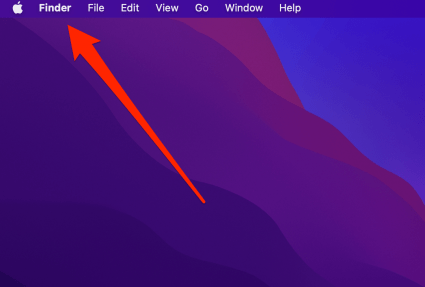
- Click Preferences.
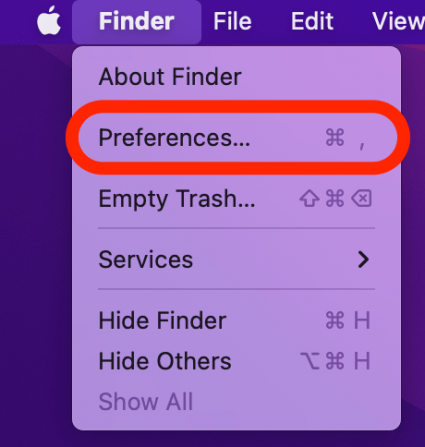
- Click Sidebar.
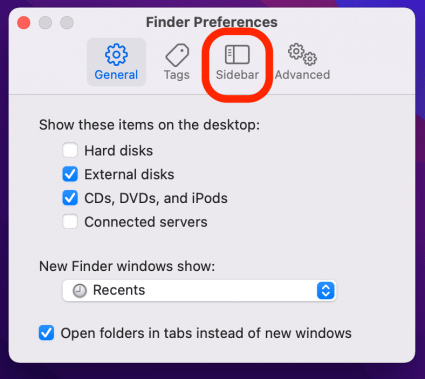
- Click the CDs, DVDs, and iOS Devices checkbox to enable these connections.

- If this setting is already selected, click the CDs, DVDs, and iOS Devices checkbox to deselect it and wait a few seconds before selecting it again.
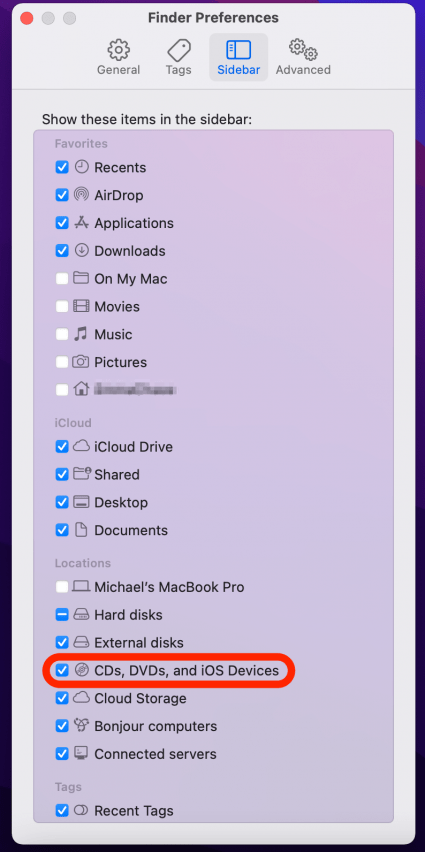
Give your Mac a few moments to recognize the connection. If this setting was not selected, you should see your iPhone should appear in the Finder's sidebar after a few moments. If your iPhone was already plugged in, you may need to unplug and reconnect the device for your Mac to recognize it.
iPhone Not Appearing in Finder? Contact Apple Support!
Unfortunately, if you're still having connection issues, this signals that your issue is likely a hardware issue or damaged component. Although we hope the solution doesn't involve having to replace a hardware component, your best bet is to contact Apple Support for further assistance.

Emma Chase
Emma Chase is a freelance writer for iPhone Life. She has her Bachelors degree in Communication from the University of Northern Iowa. Emma has worked in many sectors in her professional career, including the higher education, finance, and nonprofit. Emma lives in small-town Iowa with her husband and two children. When she’s not geeking out over the newest Apple product or wrangling her kids, Emma enjoys a good book, crocheting, and trying new foods.
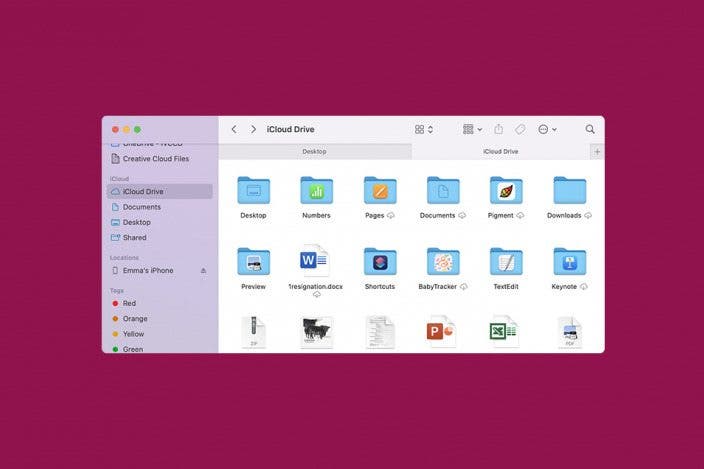

 Rachel Needell
Rachel Needell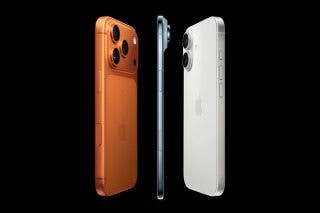
 Rhett Intriago
Rhett Intriago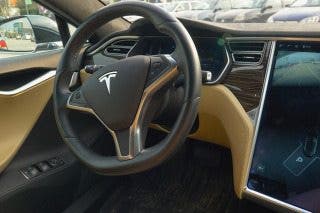
 Olena Kagui
Olena Kagui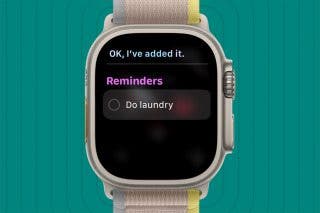

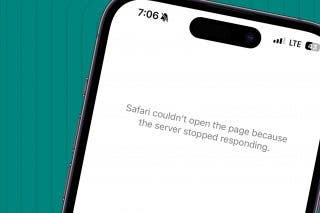
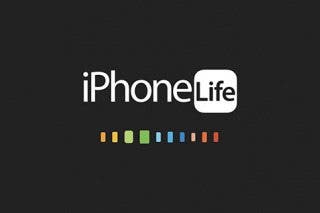
 Susan Misuraca
Susan Misuraca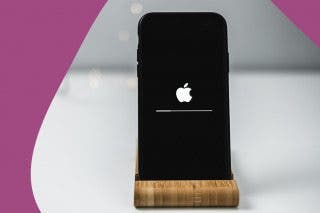
 Leanne Hays
Leanne Hays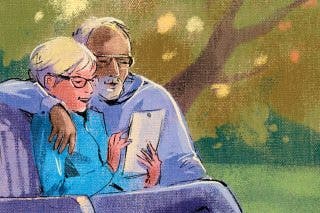
 Hal Goldstein
Hal Goldstein
 Amy Spitzfaden Both
Amy Spitzfaden Both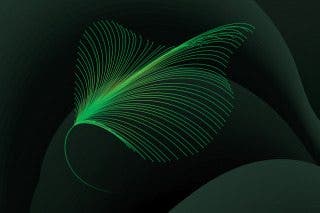
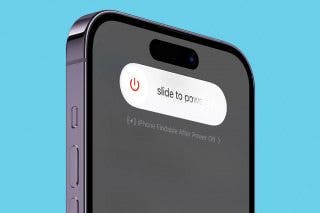
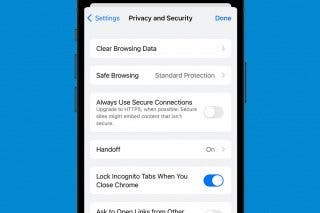
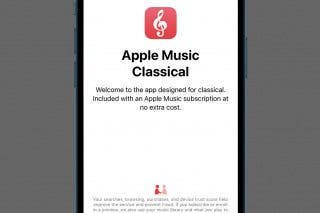

 David Averbach
David Averbach